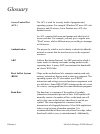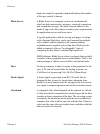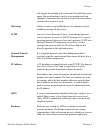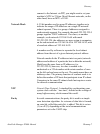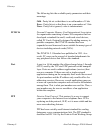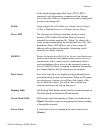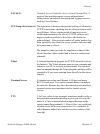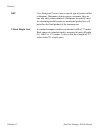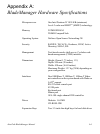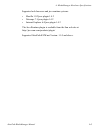Glossary
Glossary-8 AlterPath Manager E2000 Manual
The following lists the available parity parameters and their
meanings:
Odd - Parity bit set so that there is an odd number of 1 bits
Even - Parity bit set so that there is an even number of 1 bits
None - Parity bit is ignored, value is indeterminate
PCMCIA Personal Computer Memory Card International Association.
An organization consisting of some 500 companies that has
developed a standard for small, credit card-sized devices,
called PC Cards. Originally designed for adding memory to
portable computers, the PCMCIA standard has been
expanded several times and is now suitable for many types of
devices including network cards (NICs).
The PCMCIA 2.1 Standard was published in 1993. As a
result, PC users can be assured of standard attachments for
any peripheral device that follows the standard.
Port A port is a 16-bit number (the allowed range being 1 through
65535) used by the TCP and UDP protocols at the transport
layer. Ports are used to address applications (services) that
run on a computer. If there was only a single network
application running on the computer, there would be no need
for port numbers and the IP address only would suffice for
addressing services. However, several applications may run
at once on a particular computer and we need to differentiate
among them. This is what port numbers are used for. Thus, a
port number may be seen as an address of an application
within the computer.
PPP Point-to-Point Protocol. This protocol is a way to connect
your computer to the Internet over telephone lines. PPP is
replacing an older protocol, SLIP, as it is more stable and has
more error-checking features.
PPP has been a widely-used Internet standard for sending
datagrams over a communications link. The PPP standard is
described in RFC 1661 by the Point-to-Point Working Group




